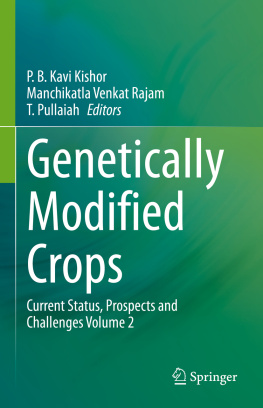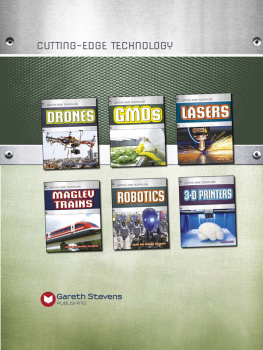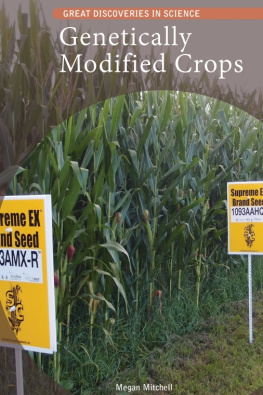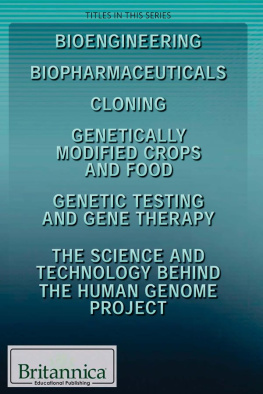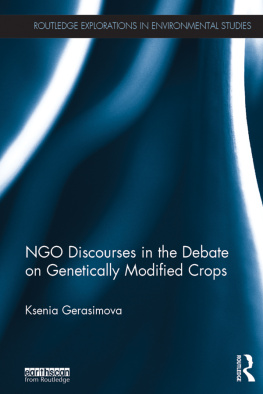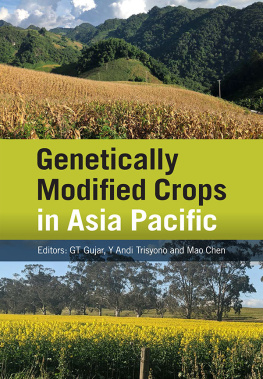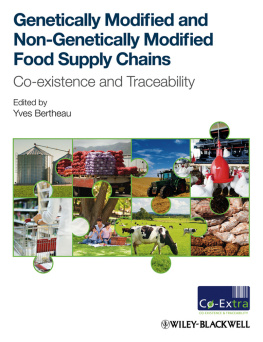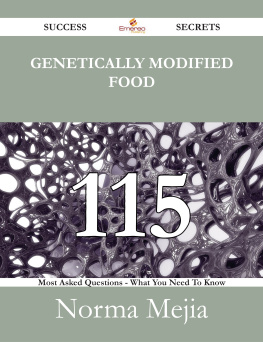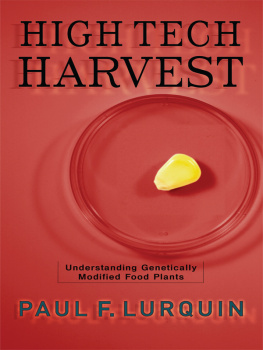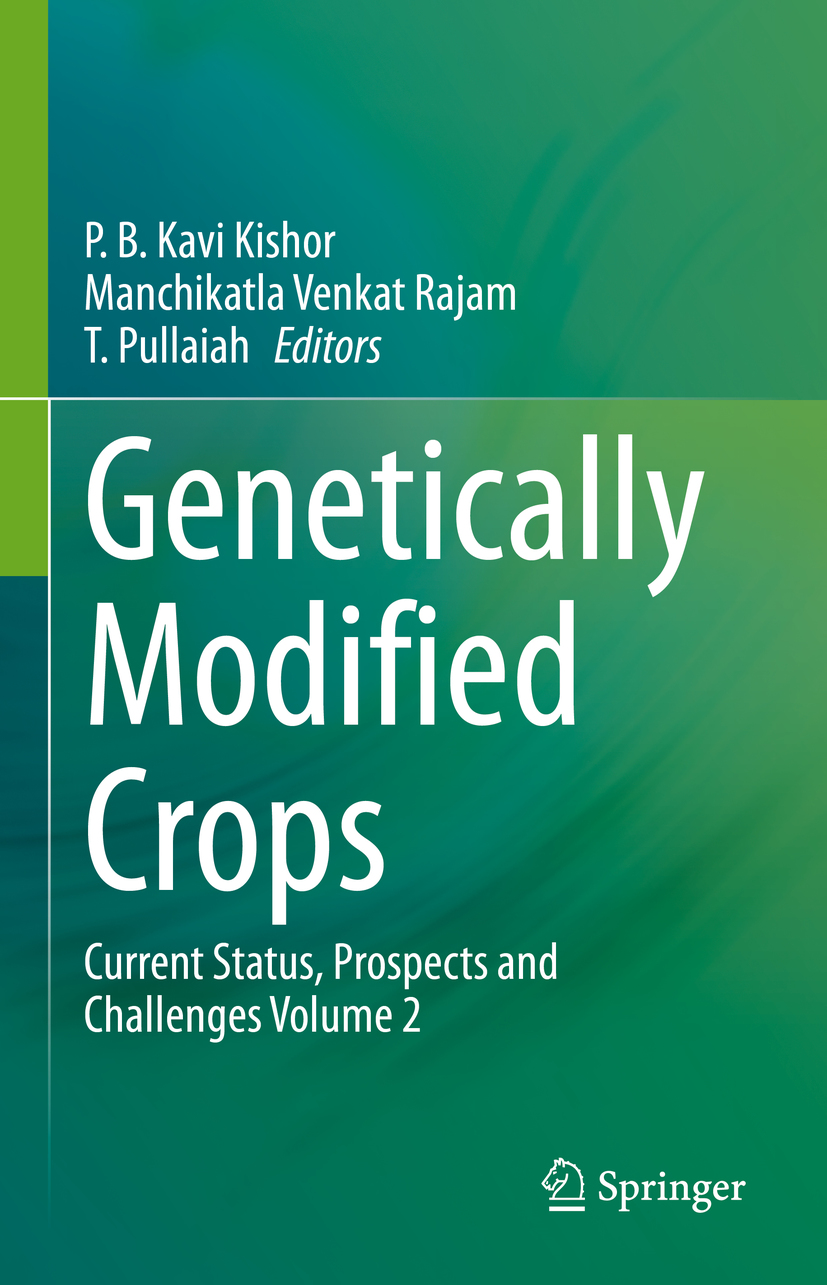Editors
P. B. Kavi Kishor
Department of Biotechnology, Vignans Foundation for Science, Technology & Research, Guntur, Andhra Pradesh, India
Manchikatla Venkat Rajam
Department of Genetics, University of Delhi South Campus, New Delhi, India
T. Pullaiah
Department of Botany, Sri Krishnadevaraya University, Anantapur, Andhra Pradesh, India
ISBN 978-981-15-5931-0 e-ISBN 978-981-15-5932-7
https://doi.org/10.1007/978-981-15-5932-7
Springer Nature Singapore Pte Ltd. 2021
This work is subject to copyright. All rights are reserved by the Publisher, whether the whole or part of the material is concerned, specifically the rights of translation, reprinting, reuse of illustrations, recitation, broadcasting, reproduction on microfilms or in any other physical way, and transmission or information storage and retrieval, electronic adaptation, computer software, or by similar or dissimilar methodology now known or hereafter developed.
The use of general descriptive names, registered names, trademarks, service marks, etc. in this publication does not imply, even in the absence of a specific statement, that such names are exempt from the relevant protective laws and regulations and therefore free for general use.
The publisher, the authors and the editors are safe to assume that the advice and information in this book are believed to be true and accurate at the date of publication. Neither the publisher nor the authors or the editors give a warranty, expressed or implied, with respect to the material contained herein or for any errors or omissions that may have been made. The publisher remains neutral with regard to jurisdictional claims in published maps and institutional affiliations.
This Springer imprint is published by the registered company Springer Nature Singapore Pte Ltd.
The registered company address is: 152 Beach Road, #21-01/04 Gateway East, Singapore 189721, Singapore
Foreword
To get easy access to food and to improve the productivity of crop plants, humans have used methods of domestication and improvement through selective breeding, based on useful phenotypic traits. It was through the work of Gregor Mendel that we learnt about the genetic basis of plant traits. The first hybrid corn was developed in 1922 by an intelligent breeding strategy. Following the discovery of DNA as the genetic material, work of a number of groups led to the concept of gene as the unit of DNA that controls a phenotypic character of an organism. And it was in 1973 that Herbert Boyer and Stanley Cohen developed genetic engineering by inserting DNA from one bacterium to another. Around the same time Jeff Schell and Marc Van Montagu discovered that it is due to the transfer of the plasmid DNA of Agrobacterium tumefaciens that results in tumor formation in plants. This research was a by-product of curiosity-driven science and based on fundamental scientific discovery. Using this information, and developing plant transformation technology, group of Mary-Dell Chilton and R. Fraley and scientists from the Monsanto Company created the first transgenic plant. During the mid-1990s, with the creation of GM tomato, the initial wave of GM plants was set in motion. However, due to certain issues of public acceptability and stringent regulatory laws that were put in place in different countries, the growth of this technology was slowed down. Van Montagu, whom I have had the pleasure of meeting and knowing for a long time, wrote an insightful article in the Annual Review of Plant Biology in 2011 titled It is long way to GM Agriculture. Even then this technology has been used in many crops and the global biotech crop area is steadily increasing within many countries which have adopted this technology for crop improvement in their agriculture systems. Unfortunately, due to various social and political issues the adoption of this technology has received resistance. This trend needs to be reversed. In the meanwhile, one has seen the emergence of new technologies like RNAi to silence the expression of genes to understand their role as also to develop novel transgenic plants with useful traits. And since 2015, gene editing technologies have evolved which have become useful and efficient tools to manipulate DNA in plant cells. And now we are moving onwards to the precision genome engineering though prime genome editing which does not involve double-strand breaks and donor DNA templates. Hopefully, these interventions will not be subjected to as much stringent regulatory procedures and will also find better acceptability in the society.
An article was published in EMBO Reports by Fagerstrom et al. in 2013, entitled Stop Worrying Start Growing with the subtitle, Risk research on GM crops is a dead parrot, it is time to start reaping the benefits of GM. This is even more true today. The present volumes by Professors Kavi Kishor, Rajam, and Pullaiah have been compiled to convey the same message by presenting achievements and opportunity of employing different technological tools for genetic improvement of plants. I have known the editors of this volume for a long time. They have themselves made significant contributions in the area of plant biotechnology and are well acquainted with GMOs, in all its perspectives. They are also aware of the views of opponents of this technology. Accordingly, taking these into considerations too, they have broadly outlined the status, prospects, and challenges of different genetic interventions in various plants of economic importance for improving traits like developing resistance to viral, insect, and other diseases and for conferring tolerance to abiotic stresses. With rapid advancements in genome sequencing methodologies and functional genomics tools, it has now been possible to identify the genes which can be deployed in a very precise manner using efficient transformation techniques.
These volumes cover, among cereals, a chapter on rice that deals with the use of GM technology to address the problem of food and nutrition security and a chapter each on wheat and finger millet. Legumes, which remained recalcitrant for a long time and an efficient transformation system was not available, have now been tamed. This family of plants have received special attention, and a chapter each on pigeonpea, chickpea, cowpea, and peanut have found a place in this volume. Among vegetables there is a detailed account on the present status on brinjal, tomato, cucurbits, and one chapter each on redpepper and capsicum. Other plants of importance which have been included are sugarcane, cassava, banana, papaya, citrus, mulberry, and jatropha. Work on two oil plants, sunflower and safflower, has been presented in two independent chapters. This approach of illustrating the use of the technology for each species separately, rather than group them on specific trait, I find, provides better perspective to evaluate the importance of GM technology with respect to each plant species.
These volumes, I am very sure, will be useful to all students and practitioners of biotechnology, be in colleges, universities, and private organizations, as well as for policy makers and regulators in the government agencies. I look forward to the deployment of the safe use of new tools and techniques of genetic manipulation for the improvement of important plants on a large scale in our agriculture and horticulture system. This will help, along with other breeding methodologies, including marker-assisted breeding, to sustain productivity with limited inputs. We hope to see hunger-free world in the years to come.

